MO Tested: Shoei RF-1400 Helmet Review

The benefits of iterative improvement
Shoei has produced motorcycle helmets since 1958. More than 30 years after Shoei’s first helmets made their way into the marketplace, I bought my first Shoei, an RF-200, during the initial year of it’s production in 1989. Before the end of its production cycle in 1995, thanks to saving me in one crash, I owned a couple of them. Since that time, I have owned at least one of every single RF model that Shoei produced. To say that I am a fan of the model line would be an understatement. A Shoei RF helmet was my most worn line of helmet until the Neotec convinced me that it was the perfect helmet for daily around town rides. Still, on most sporting rides, where I’d don a non-modular helmet, the RF-1200 was still at the top of my list. After living with the newest version for about a month, the Shoei RF-1400 continues that trend with its further refinement of the company’s popular and versatile helmet.
Shop for the Shoei RF-1400 here
The first thing to consider with an established – and popular – model helmet , like the RF-1200, is that Shoei didn’t need to create a new helmet out of whole cloth. Instead, Shoei presents the RF-1400 as a refinement of its predecessor. In the press documents delivered with the helmet, the concept of kaizen, a Japanese term for “continuous improvement,” is referenced, and anyone who is familiar with the RF-1200 can immediately see the heritage in the RF-1400’s profile. Still, through extensive use of Shoei’s in-house wind tunnel, the RF-1400 manages a 6% reduction in lift and a 4% reduction in drag when compared to its elder sibling.
This improved slipperiness affects the rider in two key areas. First, rider fatigue is reduced thanks to the lessened force placed on their head. By slicing through the air more efficiently, the helmet saves the rider effort, whether simply holding the helmet steady or rotating their head to check a blind spot. This improved aerodynamics also affects the quietness of the helmet’s interior. With less turbulence around the helmet, important noises, such as traffic sounds, are easier to hear over the diminished background noise.
Since the visor is a place where noise can be generated, this was a major focus of the RF-1400’s update. The vortex generators on the trailing edge of the visor were borrowed from the X-Fourteen and help the air flow more quietly past the sides of the helmet. The new CWR-F2 shield mates to a newly designed base plate system, which Shoei claims allows for smoother opening and closing. Additionally, the first notch on the visor is a new vent position that allows for quick de-fogging.
Now would be the time to point out what is perhaps the RF’s biggest change for the user. The visor latch is centrally located instead of on the left side. Yes, if you’ve upgraded from an RF-1200, as I did, you’ll have to contend with some muscle memory for a bit (while also shedding a tear for any extra visors you may own for the RF-1200 since they won’t fit), but Shoei’s reasoning for moving the latch is sound. The new location allows for opening and closing forces to be evenly distributed between the spring-loaded base plates for more uniform opening/closing effort and a tighter seal. Since the eye port opening is a source of both wind, weather, and noise ingress into the helmet, the beading that seals the visor interface was redesigned and even features dual drains on the outer bottom edges. Finally, the standard clear shield comes with Pinlock posts, and a Pinlock visor is included with the helmet.
Another visually apparent change to the RF-1400 is the ventilation system. The center forehead vent has an additional hole and a much less fidgety slider that is easier to manipulate with gloves. The two side vents remain the same, but the exhaust outlets were enlarged to allow the negative pressure behind the helmet to better draw out hot air. In total, the RF-1400 has six intake vents and four exhausts while not negatively impacting the interior noise level.
The quietness of the RF-1400 bears mentioning. Previously, when comparing helmet noise among different helmets, the RF-1200 has always been my standard by which I compared all other helmets I’ve tested. Well, with the vents closed, the RF-1200 is no longer the champion. The RF-1400 has stepped in to take its place in side-by-side tests. One key area for noise to penetrate the sanctity of the helmet interior is the large hole required to insert the rider’s head. When donning the RF-1400, the initial slide into the interior is just a smidge tighter before your head pops into the ergonomically-shaped interior. (Well, at least for folks with a medium-to-long oval head, that is.) The redesigned cheek pads assist with the snug-but-comfortable fit. Also, installing the included chin curtain helps to mute outside noise at speed.
Although I would never recommend riding any real distance without earplugs, I have found myself riding without them more around town than I typically do – even when that ride includes a quick blast of a couple of exits on the freeway. On warmer days, with the vents open, you’ll still want plugs, but the noise level is still lower than before. When it comes to ventilation, the RF-1400 follows its predecessor. Airflow is good but not class-leading, which I think is a conscious choice. My best venting helmets tend to be noisier, and one of Shoei’s stated goals for the RF-1400 was noise reduction.
With the key changes to the RF-1400 noted above, I’d be remiss if I didn’t point out a few features that make Shoei one of the premium helmet manufacturers. First are the protective qualities, which combine to make – at 3.65 lb. – the lightest Snell-approved helmet in Shoei’s line. The Multi-Ply Matrix AIM+ Shell construction utilizes a six-ply matrix of fiberglass with lightweight organic and high-performance fibers to create a strong-yet-elastic protective layer. Following the shell, Shoei’s Dual-Layer, Multi-Density EPS liner varies the foam density to absorb impacts while still allowing for channels that flow cooling air. Finally, there is the removable, washable, adjustable, and replaceable 3D Max-Dry Interior System II, which is responsible for much of the RF-1400’s comfortable, premium fit.
In summary, the Shoei RF-1400 is a great update to its predecessor, the RF-1200, and provides iterative changes to all of the features that make the RF line so popular. You’ll find everyone from touring riders to cruiser riders to track day jockeys wearing the RF-1200, and I expect the same from the RF-1400. In just a month, the RF-1400 has already made it to the top of the list of helmets I reach for when I go for a ride.
Shop for the Shoei RF-1400 here
The Shoei RF-1400 is available at retailers, starting January 1, 2021, and is priced at $500 for solid colors and $600 for graphics
Shoei RF-1200 | |
| + ProsImproved aerodynamics while retaining family resemblanceReduced face shield noise – now with vortex generators!Shoei’s premium fit and finish | – ConsLong-to-medium oval only, round heads need not applyStill not the lightest helmet aroundPricey but worth it |
Shoei RF-1400 FAQ
Is Shoei worth the money?
Shoei is a premium helmet manufacturer, which means you get far more than a helmet that simply meets federal impact standards. Each Shoei helmet is handmade, and by the time it is packaged for shipment, it has been handled by more than 50 people as part of the stringent manufacturing and verification process. Additionally, premium helmets, like Shoei, typically offer superior comfort features such as effective venting, removable and adjustable liners, and high-quality fit-and-finish. Shoei helmet owners see the value in their comfort and finish for their extra dollars.
Which is better, Shoei or Arai?
Both Arai and Shoei are premium helmet manufacturers that are renowned throughout the world. Both produce high-quality hand-made helmets with superior fit and finish. However, they each have slightly different philosophies when it comes to designing and manufacturing helmets. Additionally, their models will fit slightly different head shapes. Since fit is of primary importance when it comes to helmets, trying on models by both brands will help to determine which is best for your head. You can’t go wrong with either brand.
Which Shoei helmet is best?
The short answer is: That depends. Shoei has a wide variety of helmets that are specifically built to suit particular uses. The RF-1400 leans heavily towards the sporting end of the spectrum, but we’ve seen them on cruisers and tourers, even though the GT-Air II was designed for those markets. So, you should start by considering your riding style and environment and work your way through the Shoei helmet line from there. Since Shoei is a premium helmet manufacturer, you can’t go wrong with any of the company’s helmets.
Shoei R-1200 Specifications | |
|---|---|
| Price | $530 (solid), $630 (graphic) |
| Sizes | XS-XXL |
| Weight | 3 lbs, 10 oz. (approximately) |
| Colors | White, Black, Light Silver, Brilliant Yellow, Basalt Grey, Matte Blue Metallic, Matte Black, and various graphics |
Additional Resources
MO Tested: Shoei Neotec II Helmet + Sena SRL Communicator Review
MO Tested: Shoei X-Fourteen Review
Best Modular Motorcycle Helmets
Best Motorcycle Touring Helmets
Best Motorcycle Racing Helmets
The 10 Best Motorcycle Helmets You Can Buy Today
HJC IS-17 Helmet Review
Biltwell Gringo Helmet Review
Custom Fit Bell Star Carbon
We are committed to finding, researching, and recommending the best products. We earn commissions from purchases you make using the retail links in our product reviews. Learn more about how this works.
Become a Motorcycle.com insider. Get the latest motorcycle news first by subscribing to our newsletter here.

Like most of the best happenings in his life, Evans stumbled into his motojournalism career. While on his way to a planned life in academia, he applied for a job at a motorcycle magazine, thinking he’d get the opportunity to write some freelance articles. Instead, he was offered a full-time job in which he discovered he could actually get paid to ride other people’s motorcycles – and he’s never looked back. Over the 25 years he’s been in the motorcycle industry, Evans has written two books, 101 Sportbike Performance Projects and How to Modify Your Metric Cruiser, and has ridden just about every production motorcycle manufactured. Evans has a deep love of motorcycles and believes they are a force for good in the world.
More by Evans Brasfield



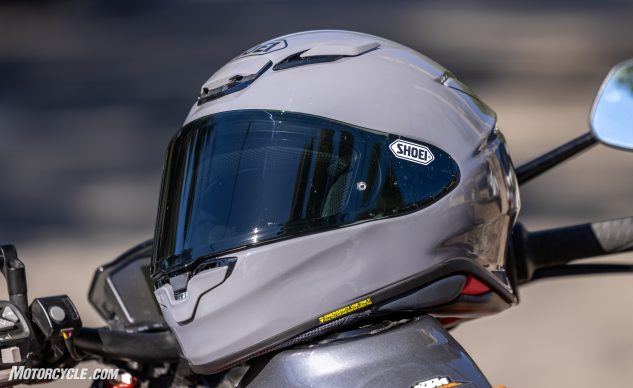

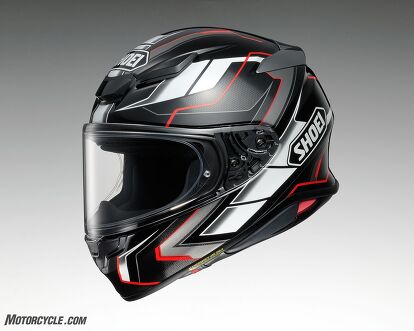


















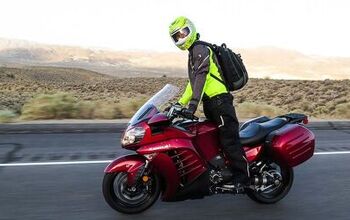

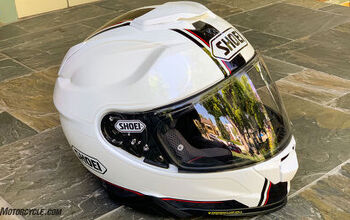
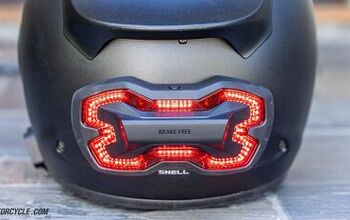
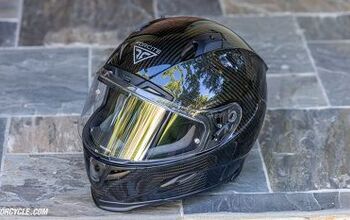
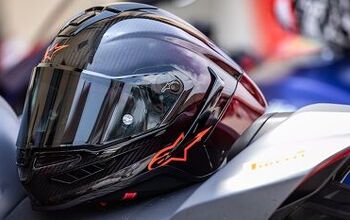










Comments
Join the conversation
How many motorcyclists are going to pay $600 for a helmet. I have been riding for 50 yrs and I cannot afford that. You will have to prove to me that this helmet is proven to have much better head protection then a $200 helmet if a crash occurs. My understanding is that any helmet dropped on a hard surface should be replaced?
I want noise cancelling ear phones in a helmet. I think maybe Sena makes one.